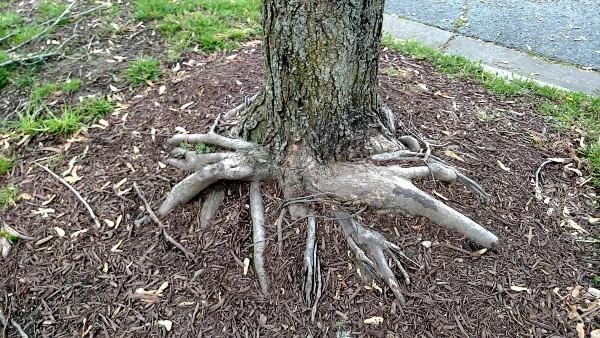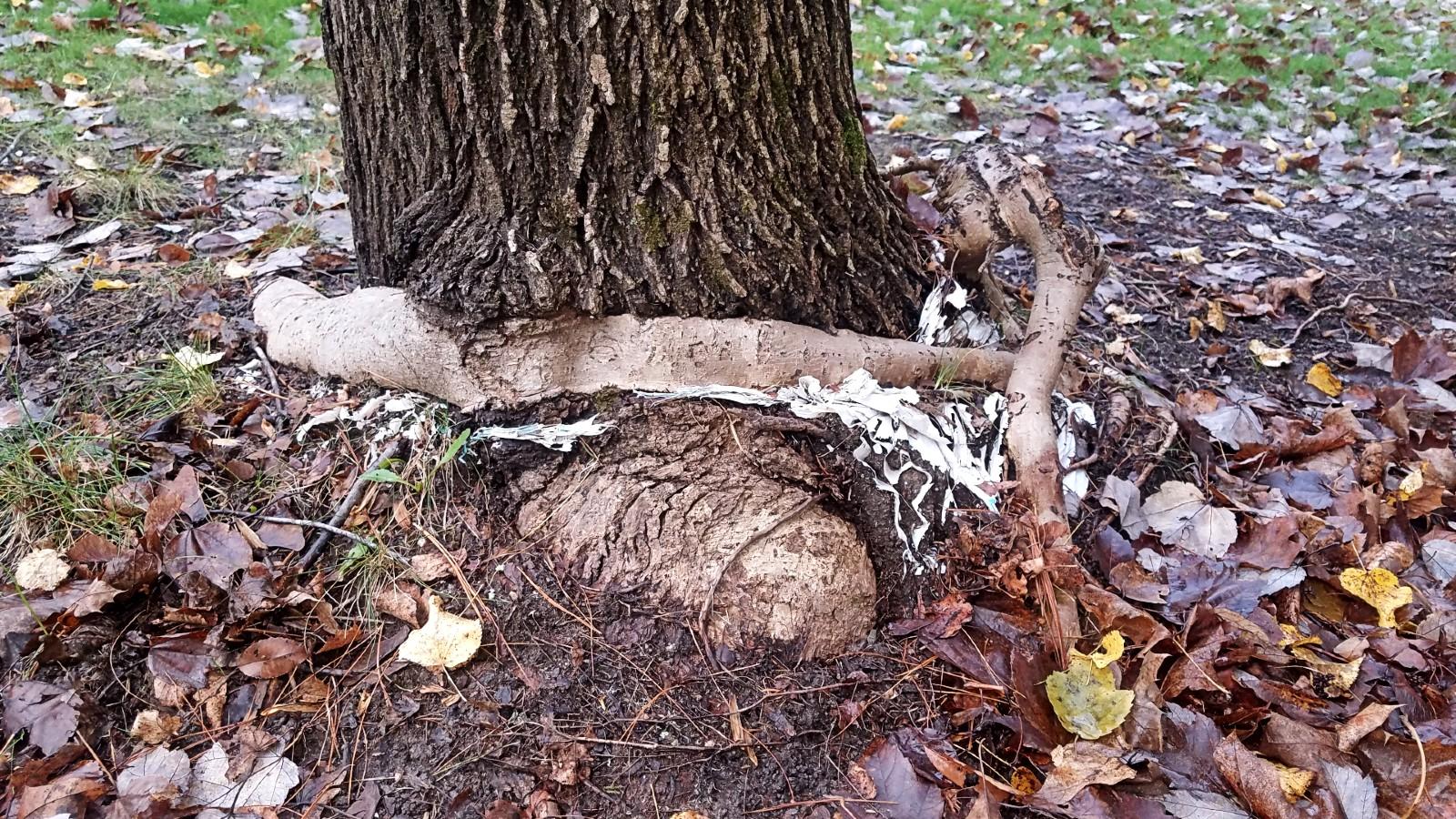What is a girdling root?
- A girdling root is a root that grows in a circular or spiral pattern around the trunk or at or below the soil line, gradually strangling the trunk.
- As roots circle the trunk, they can slow and eventually cut off the flow of sap in the tree. Carbohydrates produced by the leaves, through photosynthesis, are unable to move through the phloem to the roots.
- They may form in root-bound container-grown plants, begin when a tree is transplanted, or develop as a tree grows.
- Poor planting techniques, deep mulch, or compacted soil seem to encourage the development of girdling roots at the base of the trunk.
- Trees with girdling roots tend to decline over a 5-10 year period.
- Red and sugar maples, 'Greenspire' lindens, American beech, pines, oaks, poplars, zelkovas, and elms, most often develop girdling roots.
- Trees and shrubs that are container-grown and pot-bound frequently develop girdling roots.

Symptoms
- Many symptoms of girdling roots are caused by a weakened root system unable to supply adequate water or nutrients to leaves.
- The crown of the tree may be thin, with stunted growth. If you compare the tree crown to a clock, damage may first occur in the upper portion, between 10 and 2 o'clock. Leaves may be lighter green, scorched, and show early fall color and leaf drop.
- Twig or large branch dieback can occur.
- If one side of the trunk is straight, with no natural flare, digging may indicate a girdling root below the soil surface.
- Trees with severe girdling roots may lean or completely break off.
- Reduced sap flow makes the tree more susceptible to insects, disease, and environmental stress.
Treatment
- Prevention and early detection reduce girdling root problems.
- Periodically inspect trees as they grow to detect girdling roots while roots are small. Girdling roots can take years to develop.
- When planting, loosen and straighten circling roots. Be sure the planting hole is wide, allowing ample room for the root system. Do not smooth or compact the sides of the planting hole, which may deflect roots and lead to girdling. The sides of the planting hole should be loose and roughened, to allow root penetration into the surrounding soil. Be sure plants are planted at the proper depth and mulched lightly.
- Small girdling roots can be removed with a sharp chisel and mallet. Remove several inches of the root where it contacts the tree trunk, to ensure the root does not reconnect.
- If a large girdling root has grafted with the tree trunk, it is advisable to allow it to remain undisturbed. Cutting a V-shaped notch in the top half of the girdling root may help to weaken it without disrupting the vascular flow to the top of the tree.
- Removal of large girdling roots (over two inches in diameter) is a more involved process. It is best to consult with a licensed arborist when considering their removal.
- Seriously weakened or declining trees may need to be removed.
